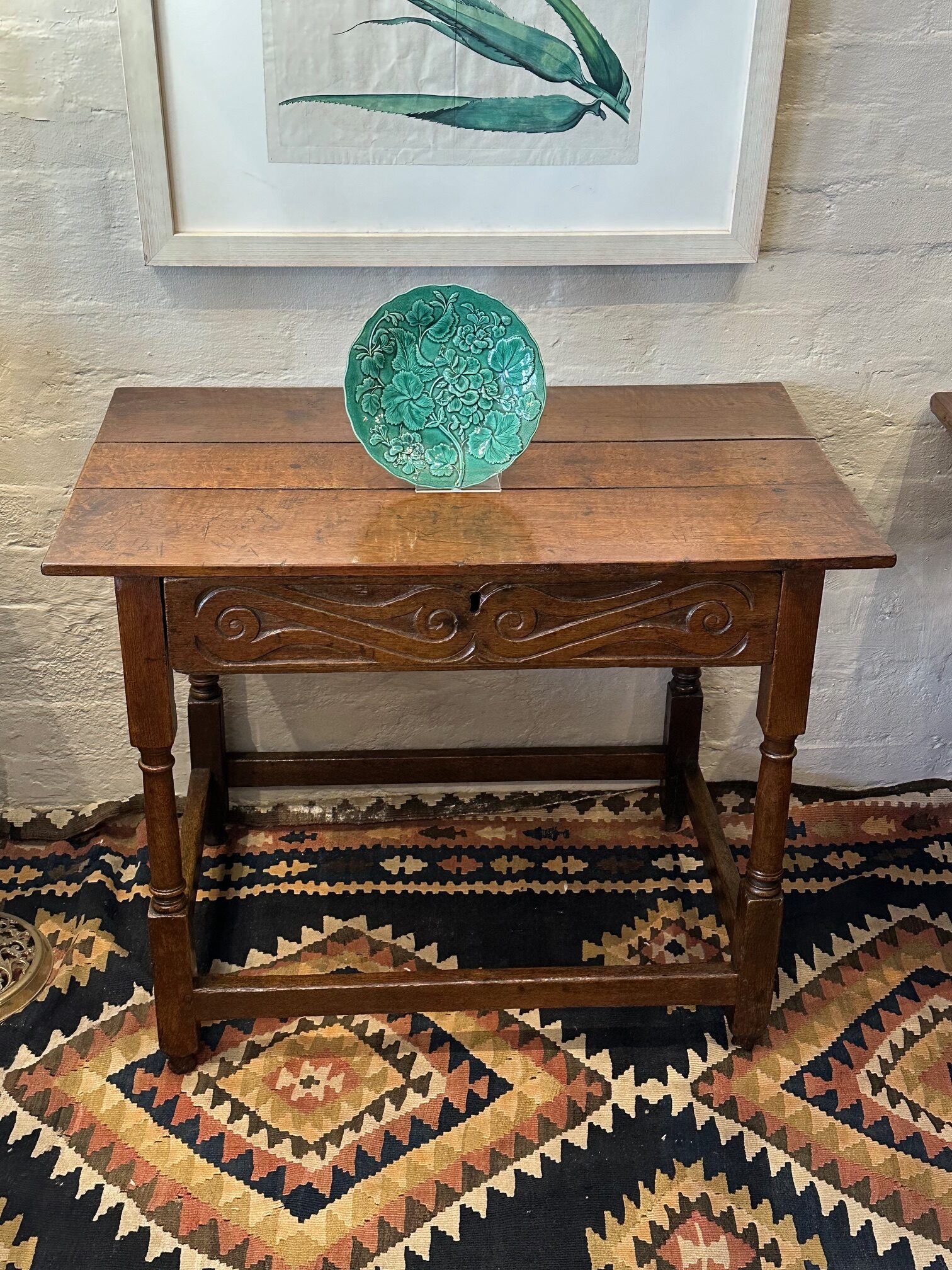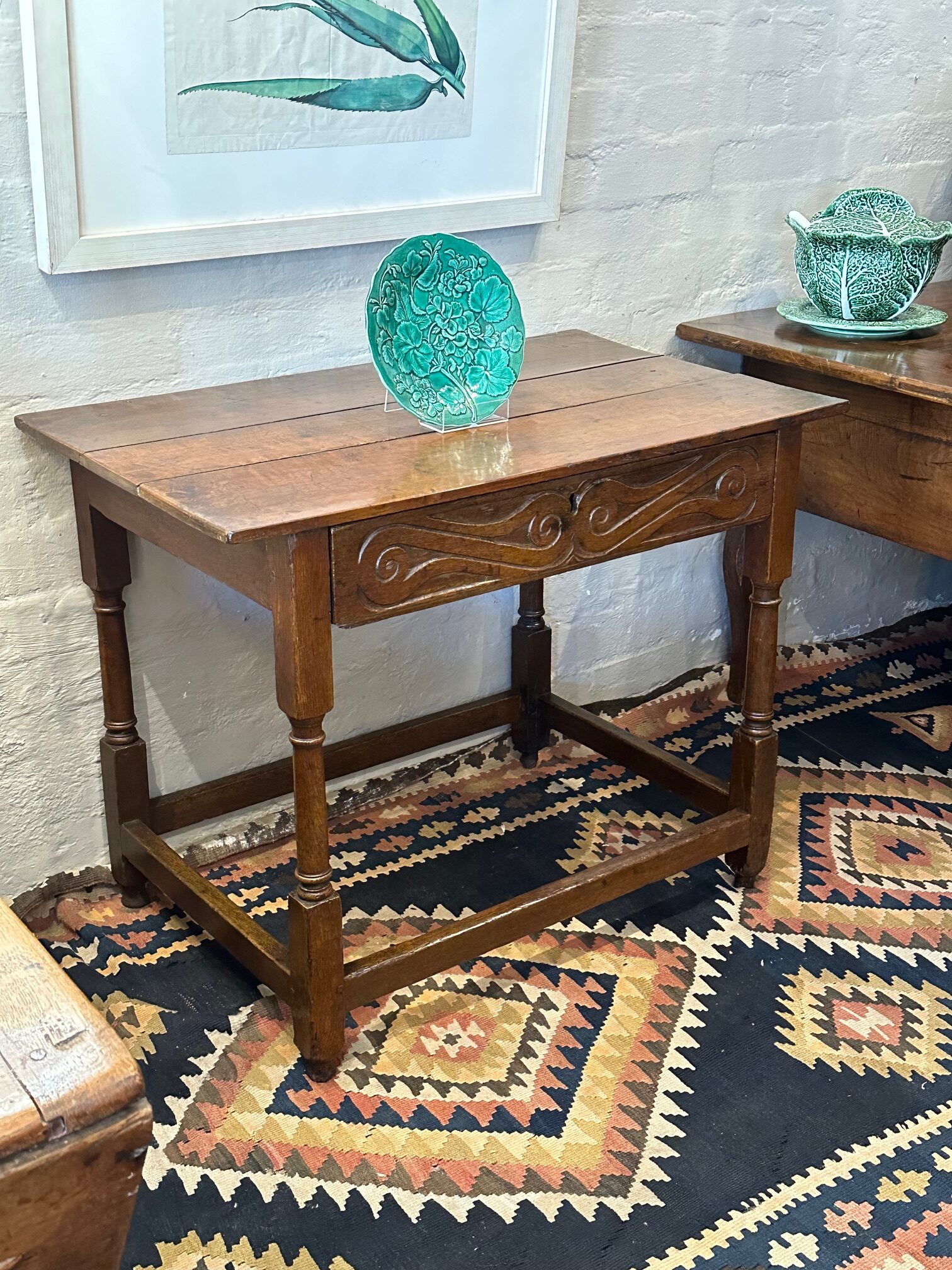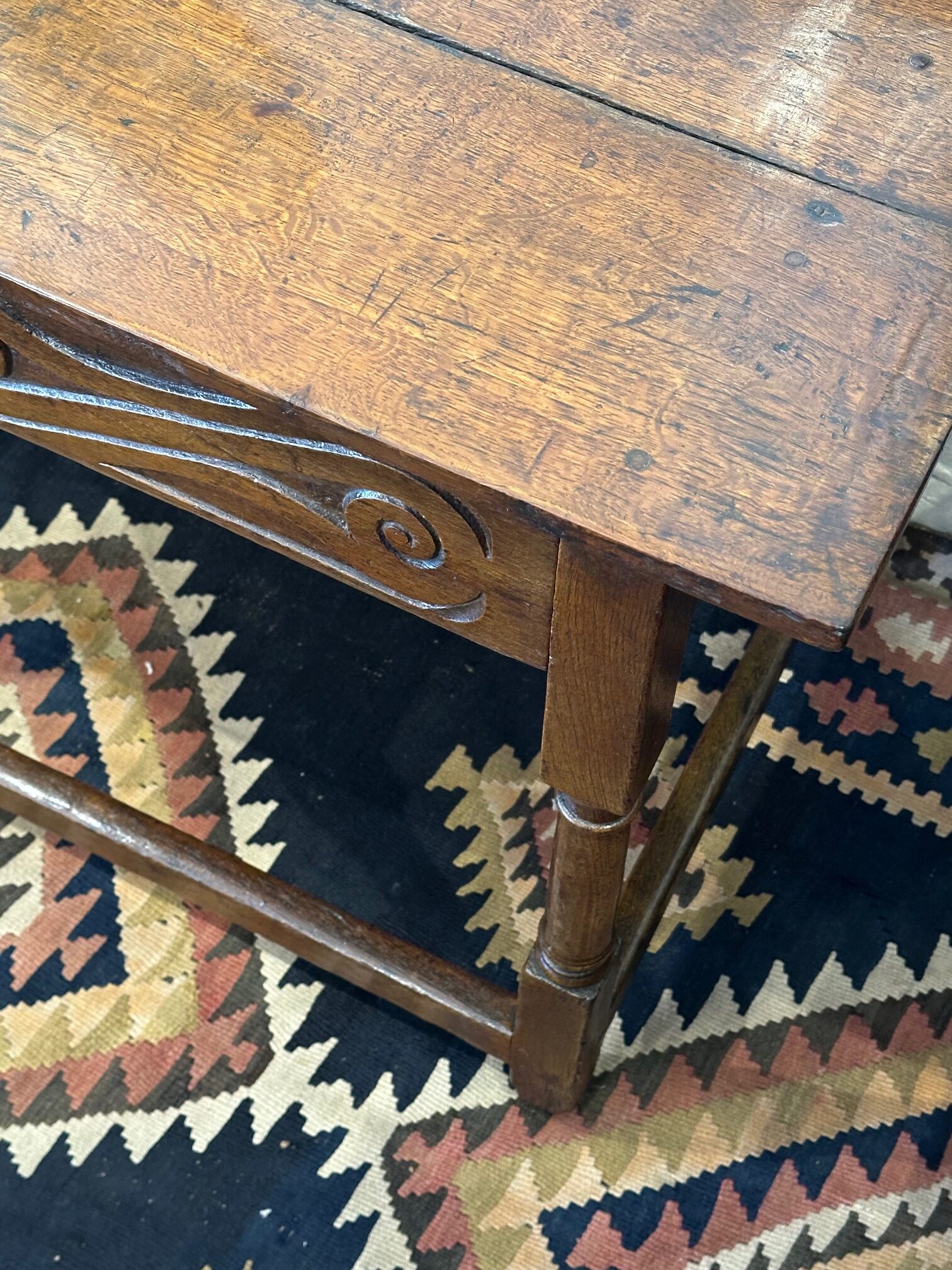Description
The preoccupation with English country furniture was to include styles and methods from over a century or longer before. The three plank top, simply pegged to the side and front rails. (At times merely attached by hand made nails)
The deep double S-scrolls to the long drawer front, were used from 1580 – 1750, most popular 1630 – 1680. Also throughout the USA. The drawer construction commonly used throughout the 17th century until first quarter 18th century.
The drawer front is merely nailed (rather than dovetailed) onto the sides, having deep horizontal carved channels, allowing the drawer to run on the attached side case runners. The drawer once had a lock and key, gone for centuries. However no top rail for the lock throw to enter, instead the crude country design has a chiseled deep groove directly into the front board, therefore removing the need for a top rail.
The lower drawer front hangs below the floor boards, so opens with fingers, not only a key handle. (Clever construction)
This style of turned legs suggests 1700 – 1750.
With flush rectangular stretchers in keeping with this period.
First half 18th century English country oak side table.
The well patinated three plank top, above a long deep “S” scroll carved drawer, supported by side runners.
Resting on stylish turned and block legs, joined by rectangular stretchers.
Retaining all four very well worn turned feet.
1700 – 1750





